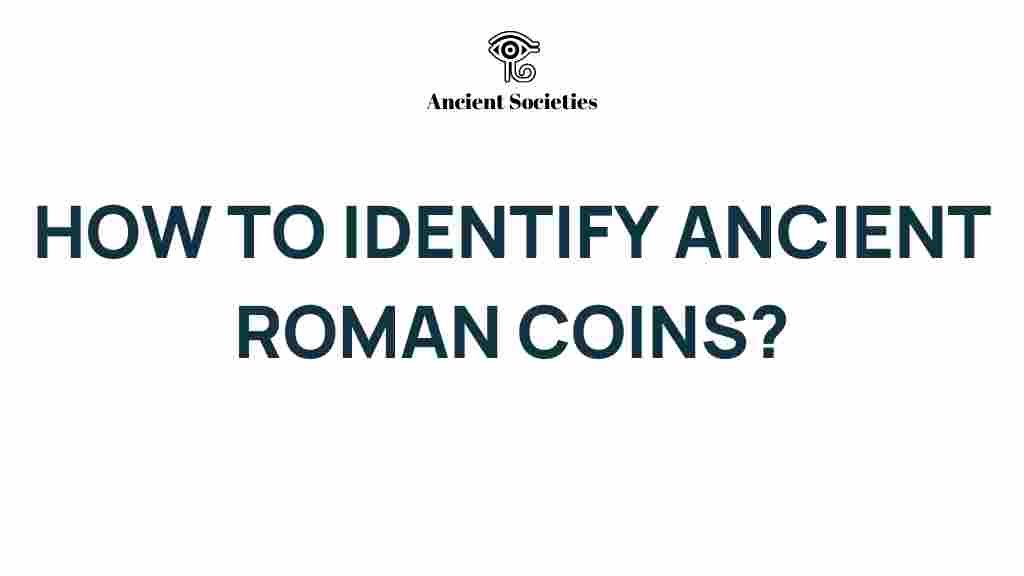Unveiling the Secrets: How to Identify Ancient Roman Coins
Ancient Roman coins are not merely artifacts; they are windows into the past, offering insights into the culture, economy, and politics of one of history’s most influential civilizations. For collectors and enthusiasts alike, understanding how to identify these coins can enhance one’s appreciation and valuation of the pieces. In this article, we will delve into the intricacies of coin identification, exploring the history, techniques, and resources available for identifying ancient Roman coins.
The Significance of Ancient Roman Coins
Ancient Roman coins serve as vital historical documents that reflect the economic conditions, political changes, and cultural influences of their time. These coins were used as currency, but they also played roles in propaganda and commerce. Collecting these coins has become a popular hobby among numismatics, who seek to preserve and study these valuable artifacts. Understanding the significance of these coins is crucial for anyone interested in collecting or appraising them.
Understanding the Basics of Coin Identification
Before diving into the specifics of identifying ancient Roman coins, it is essential to grasp some basic concepts of coin collecting and numismatics:
- Numismatics: The study or collection of currency, including coins, tokens, paper money, and related objects.
- Types of Coins: Ancient Roman coins can be categorized into various types, including denarii, sestertii, and follis.
- Mint Marks: Many ancient coins have mint marks that indicate where they were produced, providing insight into their origin.
Step-by-Step Process of Identifying Ancient Roman Coins
Identifying ancient Roman coins can be a rewarding experience. Here is a step-by-step guide to help you through the process:
Step 1: Examine the Coin’s Condition
The first step in coin identification is to carefully examine the physical condition of the coin. The state of preservation can significantly impact its value.
- Check for Wear: Look for signs of wear, which can indicate how much the coin has been circulated.
- Inspect for Damage: Look for scratches, dents, or corrosion that may affect the coin’s value.
- Cleanliness: Avoid cleaning the coin, as this can lower its value; instead, keep it in its natural state.
Step 2: Identify the Coin’s Features
Ancient Roman coins typically feature various designs that can help in identification:
- Obverse and Reverse: The obverse (front) often features a portrait of an emperor or goddess, while the reverse (back) usually depicts a scene or symbol.
- Inscriptions: Read the inscriptions carefully. They often include the name of the ruler and other identifying information.
- Imagery: Take note of the imagery on the coin. Different symbols can signify various historical contexts or events.
Step 3: Use Reference Materials
There are numerous resources available for identifying ancient Roman coins. Consider the following:
- Books: Invest in numismatic books that specialize in ancient Roman coins. Titles like “Roman Coins and Their Values” by David R. Sear are invaluable.
- Online Databases: Websites like acsearch.info provide extensive databases of coin images and information.
- Forums and Communities: Join numismatic forums or online communities where you can seek advice and share findings with fellow collectors.
Step 4: Consult Experts
If you’re still unsure about your coin, consider consulting a numismatic expert or a professional appraiser. They can provide valuable insights into the coin’s history and valuation.
Troubleshooting Common Identification Issues
While identifying ancient Roman coins can be straightforward, you may encounter some challenges. Here are some common issues along with troubleshooting tips:
Issue 1: Faded or Worn Details
If the details of your coin are worn away or faded, try the following:
- Use Lighting: Examine the coin under different lighting conditions to highlight any remaining details.
- Photography: Take high-resolution photographs; sometimes, digital enhancement can reveal hidden features.
Issue 2: No Clear Inscriptions
If your coin lacks clear inscriptions:
- Compare with Known Coins: Use reference images from books or online resources to see if there are similar coins.
- Study the Style: The artistic style can provide clues to the period and origin of the coin.
Issue 3: Lack of Documentation
If you cannot find information about your coin:
- Broaden Your Search: Explore different numismatic resources and databases.
- Network: Connect with other collectors who might have encountered similar coins.
Valuation and Appraisal of Ancient Roman Coins
Understanding the value of ancient Roman coins is essential for collectors. Several factors influence the valuation:
- Rarity: Coins that are rare or have unique features tend to have a higher value.
- Condition: As discussed earlier, the condition of the coin is crucial for appraisal.
- Historical Significance: Coins that have historical importance or provenance may be valued more highly.
For an accurate appraisal, consider seeking professional services from licensed numismatists or appraisal firms. They can offer insights into the market value and potential for resale.
Conclusion
Identifying ancient Roman coins is a fascinating endeavor that combines elements of history, archaeology, and numismatics. By following the steps outlined in this article, you can enhance your skills in coin identification, appreciation, and valuation. Whether you are a seasoned collector or a novice, the world of ancient Roman coins holds endless possibilities for exploration and discovery.
For further reading on the history and significance of ancient coins, consider visiting the American Numismatic Association, a valuable resource for collectors and enthusiasts. Happy collecting!
This article is in the category Archaeology and created by AncientSocieties Team
